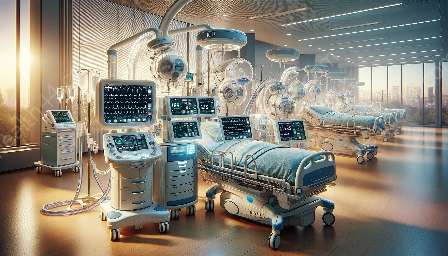Modern healthcare and life support systems have been revolutionized by the emergence of sophisticated medical devices and equipment, with intraocular lenses paving the way for remarkable advancements. In this comprehensive guide, we delve into the fascinating world of intraocular lenses, their impact on life support systems, and their significance in the realm of medical devices and equipment.
The Basics of Intraocular Lenses
First, let's understand what intraocular lenses are and how they are used in medical devices today. Intraocular lenses, commonly referred to as IOLs, are artificial lenses implanted in the eye to replace the natural lens during cataract surgery or to correct refractive errors. These lenses have evolved significantly over the years, becoming integral components of modern medical devices and life support systems.
Role in Life Support Systems
Life support systems rely on advanced medical devices and equipment to sustain and improve the quality of life for patients. Intraocular lenses play a crucial role in enhancing vision and overall well-being, particularly for individuals with cataracts or refractive errors. By restoring clear vision through cataract surgery and refractive lens exchange, intraocular lenses contribute directly to the well-being and independence of patients, making them an essential component of life support systems.
Integration with Medical Devices & Equipment
The seamless integration of intraocular lenses with medical devices and equipment has significantly expanded their scope and impact. Cutting-edge technologies, such as multifocal and toric intraocular lenses, have allowed for enhanced vision correction and improved patient outcomes. Additionally, the development of advanced surgical techniques and specialized equipment has further propelled the effectiveness and safety of intraocular lens implantation procedures.
Technological Advancements
Advancements in intraocular lens technology have been instrumental in refining medical devices and life support systems. From the introduction of premium intraocular lenses that provide multifocal vision correction to the utilization of innovative materials for enhanced biocompatibility, these technological strides have profoundly impacted the field of ophthalmology and medical device innovation. These advancements have not only expanded treatment options but have also significantly improved patient satisfaction and visual outcomes.
Impact on Patient Well-Being
The impact of intraocular lenses on patient well-being cannot be overstated. By enabling individuals to regain clear vision and reduce dependency on external aids, these lenses have the power to transform lives. Patients experience improved comfort, increased independence, and a renewed sense of freedom, all of which are pivotal to the maintenance of a good quality of life. The integration of intraocular lenses into life support systems and medical devices has thus emerged as a beacon of hope for countless individuals worldwide.
Conclusion
Intraocular lenses have redefined the landscape of medical devices and equipment, playing a vital role in life support systems and influencing patient care on a profound level. The synergy between intraocular lenses, medical devices, and life support systems has propelled the field of ophthalmology into an era of unprecedented progress and innovation. As technology continues to evolve, the future holds even greater possibilities for intraocular lenses, promising continued improvements in patient outcomes and a brighter, clearer future for countless individuals around the globe.


